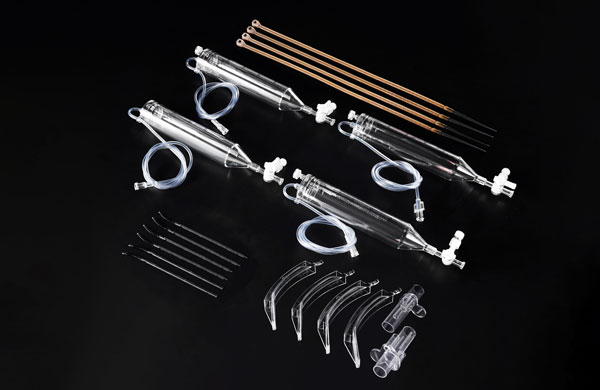In the intricate process of plastic injection molding, the occasional appearance of black stripes on the surface of plastic products is undoubtedly a major defect. Not only does it affect the aesthetic appeal of the product, but it may also indicate potential degradation of the material's properties. This phenomenon is often attributed to the degradation of plastic packaging materials due to poor thermal stability, particularly in materials that are sensitive to thermal environments.

Decomposition Due to Size Mismatch: When the product is small and the barrel size is relatively large, the prolonged residence time of the plastic in the barrel makes it susceptible to decomposition under high temperatures, resulting in black stripes. The solution lies in adjusting the barrel size or optimizing the injection molding cycle to ensure rapid passage of the plastic and reduce residence time.
Improper Use of Recycled Materials: While the addition of recycled materials can reduce costs, excessive or improper proportions can lead to accelerated decomposition of the material due to repeated heating. Controlling the proportion of recycled materials reasonably and conducting regular material performance tests are key to avoiding this issue.
Screw Damage and Gap Issues: Minor damage to the screw or excessive clearance in the non-return valve, especially when processing high-viscosity materials, can cause localized high temperatures during extrusion, promoting decomposition. Regular inspection and maintenance of screw components to ensure tight fitting are necessary measures to prevent black stripes.
Hazards of Abnormal Temperature Rise: Abnormal temperature rises during plastic processing, whether due to equipment failure or improper process settings, are direct causes of localized decomposition. Implementing strict temperature monitoring and adjusting process parameters in a timely manner are crucial for preventing black stripes.
Poor Screw Engagement and Air Entrainment: Poor screw design or operation can result in inadequate plastic engagement, entraining excessive air and forming bubbles. These bubbles burst under high temperatures, causing local burning of the plastic. Optimizing screw design to ensure good plastic feed conditions is an effective way to reduce such problems.
The Double-edged Sword of Lubricants: While lubricants can effectively reduce friction and shear heat, excessive use (exceeding 0.2%) can cause their combustible volatiles to burn back in poorly ventilated conditions, exacerbating the formation of black stripes. Precisely controlling lubricant dosage and ensuring a well-functioning ventilation system are key to balancing lubrication and avoiding black stripes.
In summary, the issue of black stripes in plastic injection molding, though seemingly simple, actually involves multiple aspects such as material selection, equipment maintenance, and process control. Through meticulous analysis and precise implementation of countermeasures, we can not only effectively avoid this defect but also enhance overall production efficiency and product quality, contributing to the sustained development of the plastic manufacturing industry.